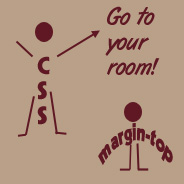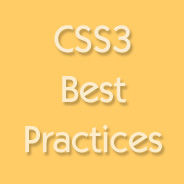CSS Property Ordering: Group Similar? Or Alphabetical?

What do you think is the best way to group or organize your CSS properities? The way I see it, there are basically three ways to do it, each of which I briefly describe below.
(Be sure to comment if you have a preference for any particular property ordering method, and your reasons for it.)



 Last week I posted
Last week I posted  Last week I posted a chart that listed support for
Last week I posted a chart that listed support for  If you’re like me, you’re probably wondering, amidst all the hype surrounding the release of
If you’re like me, you’re probably wondering, amidst all the hype surrounding the release of  Because there are so many ways to skin the proverbial cat, as CSS developers, we pretty much have free reign to do things as we please.
Because there are so many ways to skin the proverbial cat, as CSS developers, we pretty much have free reign to do things as we please. Most CSS developers eventually come to learn that, because of code savings, using shorthand notation is usually best. For this reason, I strongly recommend using shorthand notation for
Most CSS developers eventually come to learn that, because of code savings, using shorthand notation is usually best. For this reason, I strongly recommend using shorthand notation for  It seems like this should be one of the easiest things to understand in CSS. If you want a block-level element to fill any remaining space inside of its parent, then it’s simple — just add
It seems like this should be one of the easiest things to understand in CSS. If you want a block-level element to fill any remaining space inside of its parent, then it’s simple — just add  While doing some testing for cross-browser compatibility on a few of my recent articles/tutorials, I came across some odd behaviour in Opera 10.53 when styling a list of links as block-level elements.
While doing some testing for cross-browser compatibility on a few of my recent articles/tutorials, I came across some odd behaviour in Opera 10.53 when styling a list of links as block-level elements. Since CSS3 has become such a big deal in the future-thinking minds of web designers today, I think it would be appropriate for front-end developers to begin formulating some best-practice habits and techniques so that any CSS3 development we do is done right, and we therefore are able to get CSS3 development off to a good start.
Since CSS3 has become such a big deal in the future-thinking minds of web designers today, I think it would be appropriate for front-end developers to begin formulating some best-practice habits and techniques so that any CSS3 development we do is done right, and we therefore are able to get CSS3 development off to a good start. Recently, Chris Spooner of Line25 wrote a tutorial describing how to create a
Recently, Chris Spooner of Line25 wrote a tutorial describing how to create a